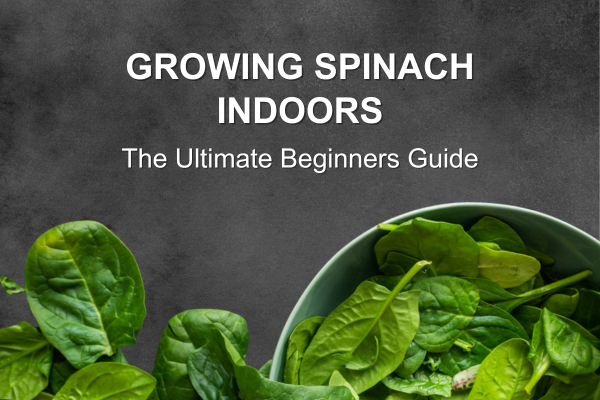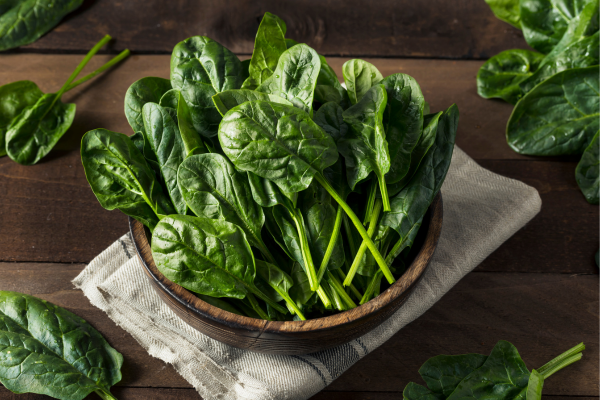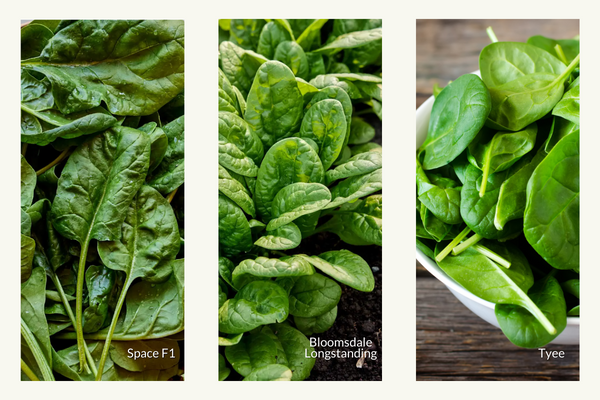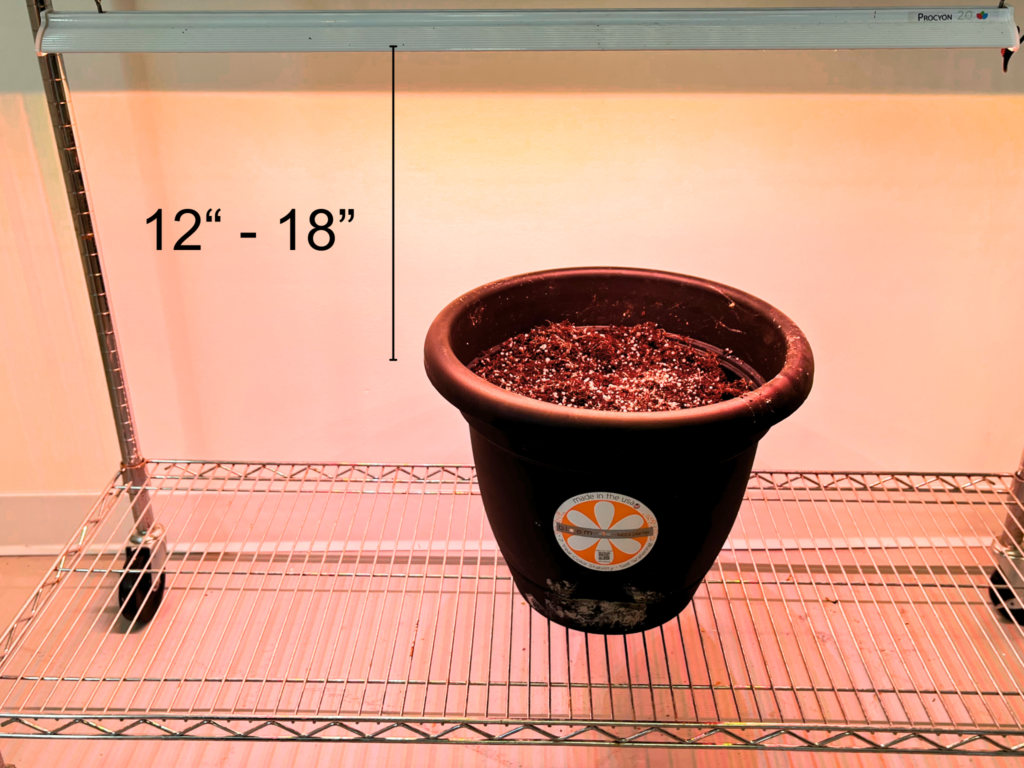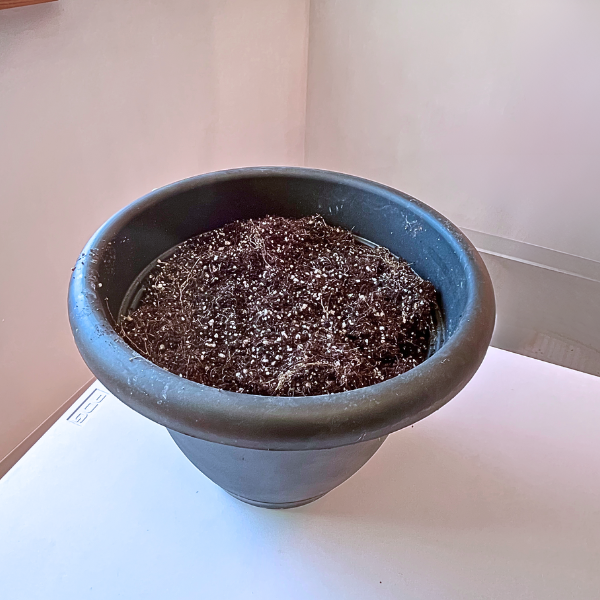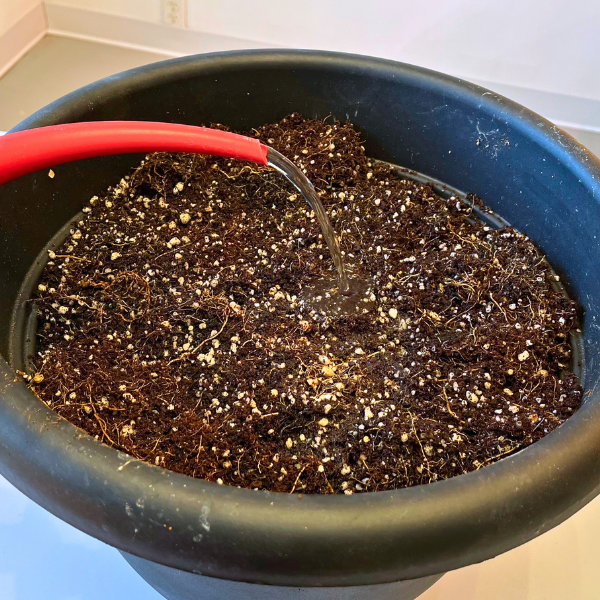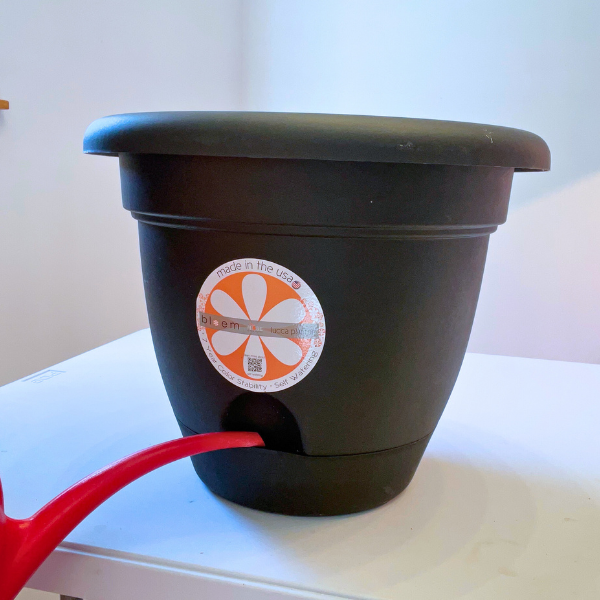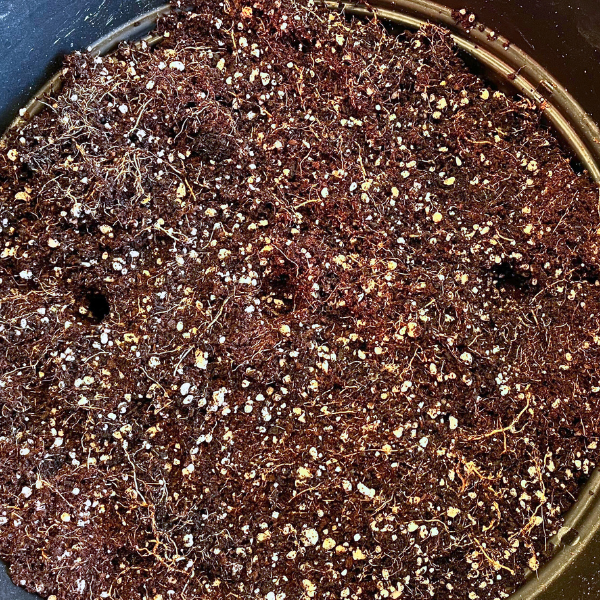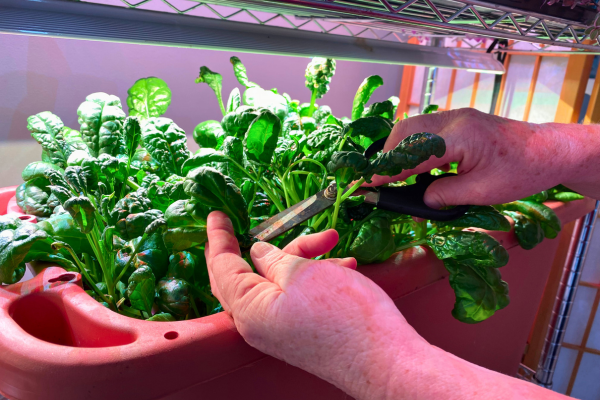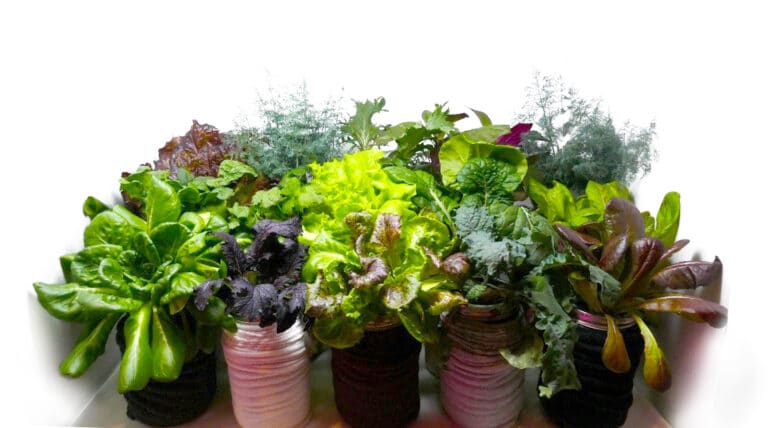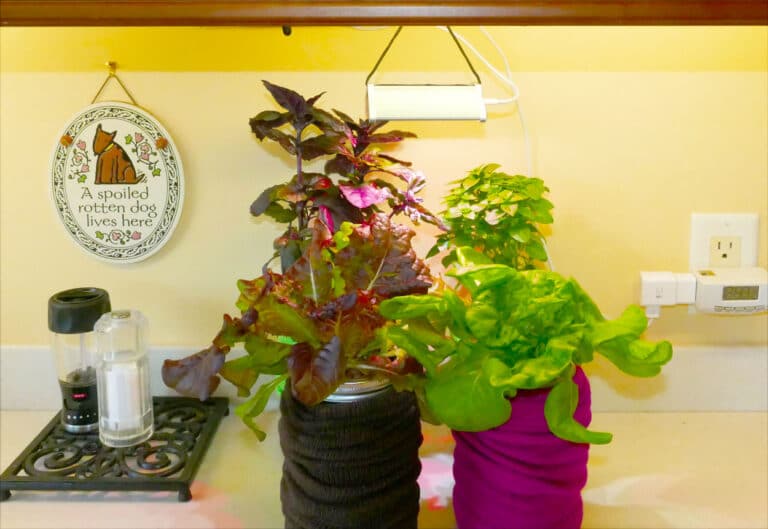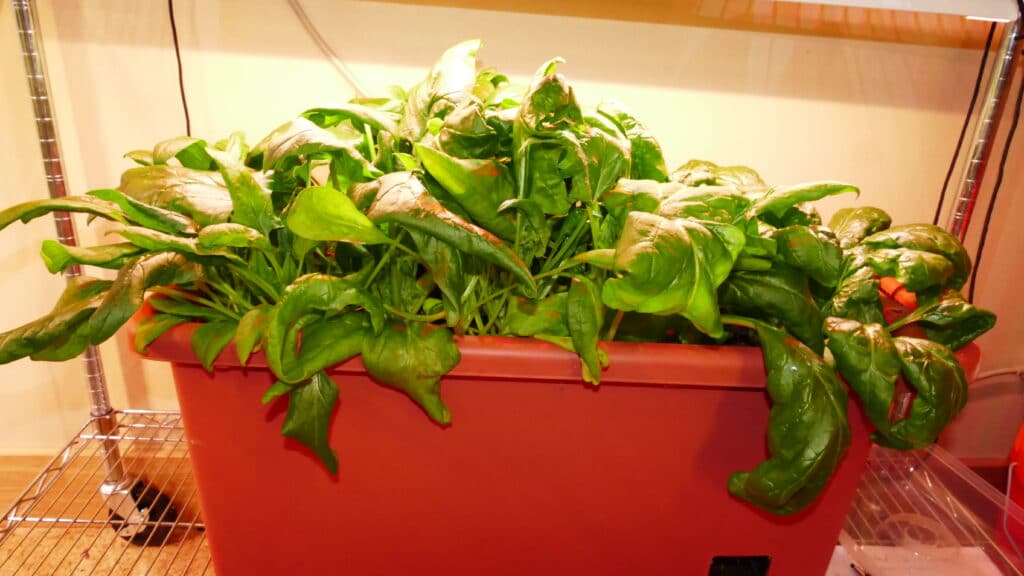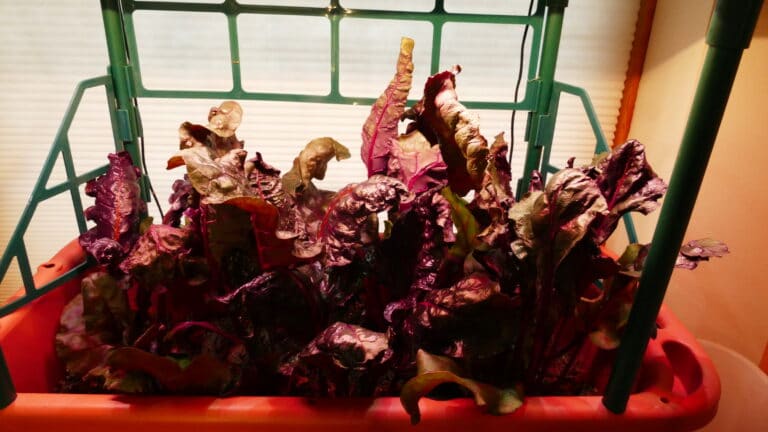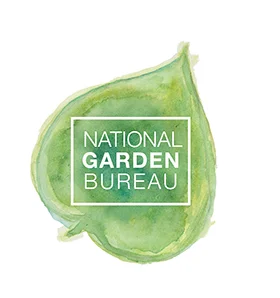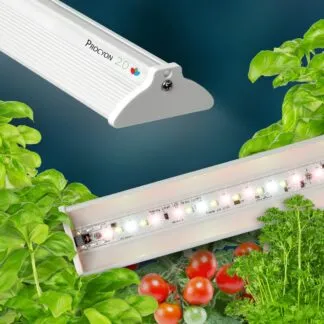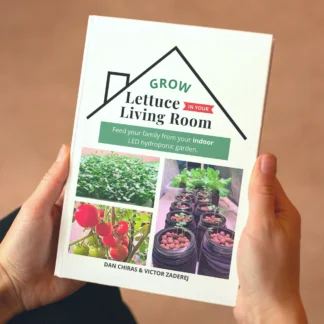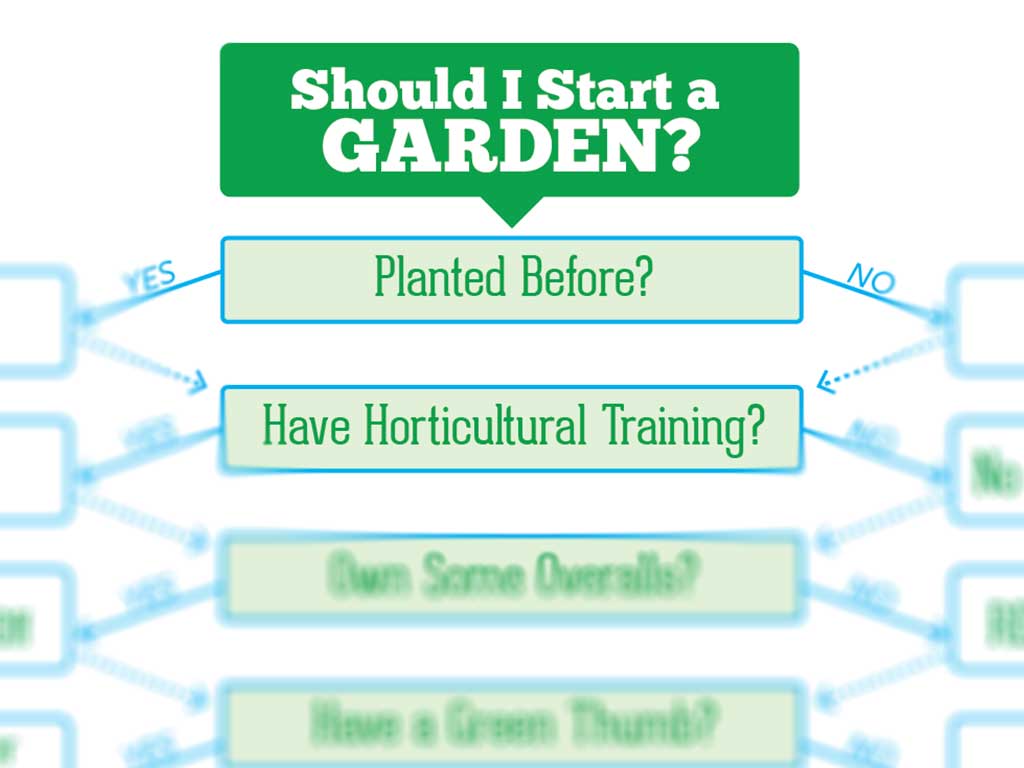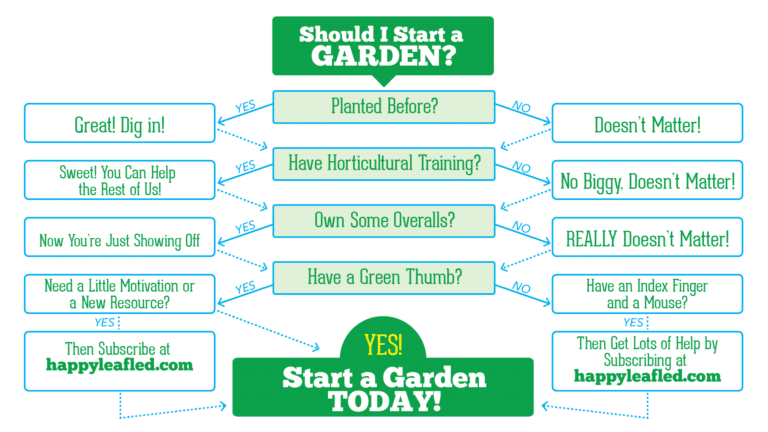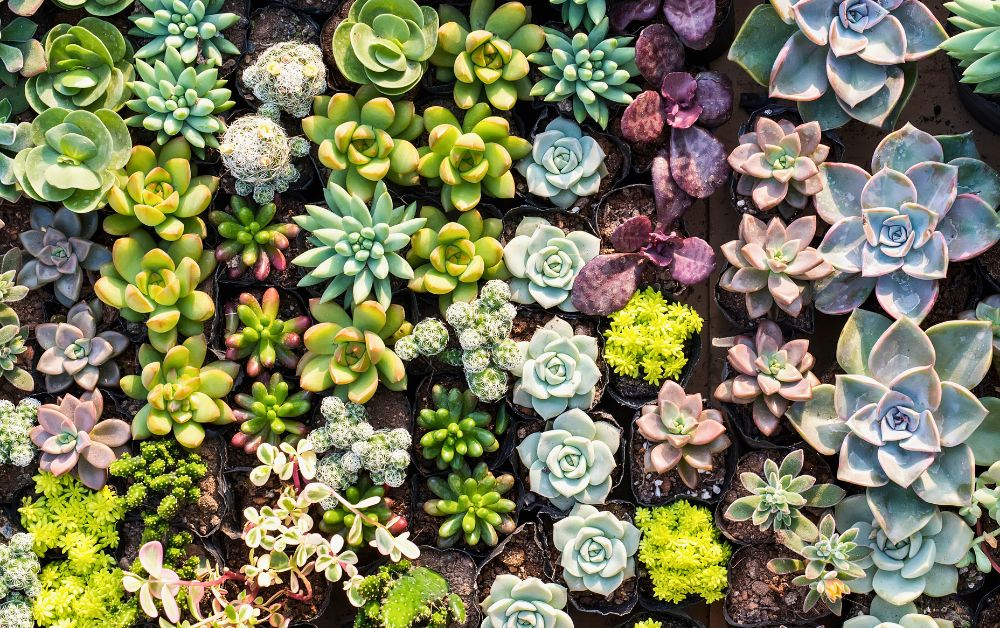
Bringing Sunshine to Your Indoor Succulents

Succulents, with their vibrant colors and diverse shapes and sizes, make charming and sometimes arresting additions to any indoor space. However, their natural desert habitat often clashes with the limited sunlight available inside our homes. This is where Happy Leaf LED grow lights come in, offering a solution to mimic sunlight , keep your succulents thriving, and make it easier to care for and propagate succulents.
Table of Contents
Choosing the Right LED Grow Lights for Succulents:
Not all LED grow lights are created equal for succulents. Happy Leaf LEDs promote optimal growth, are helpful in promoting the coloring of succulent plants, and offer a full spectrum output, mimicking natural sunlight and providing the essential wavelengths for photosynthesis.
Setting Up Your Indoor Oasis & LED Grow Lights for Succulents that STUN:
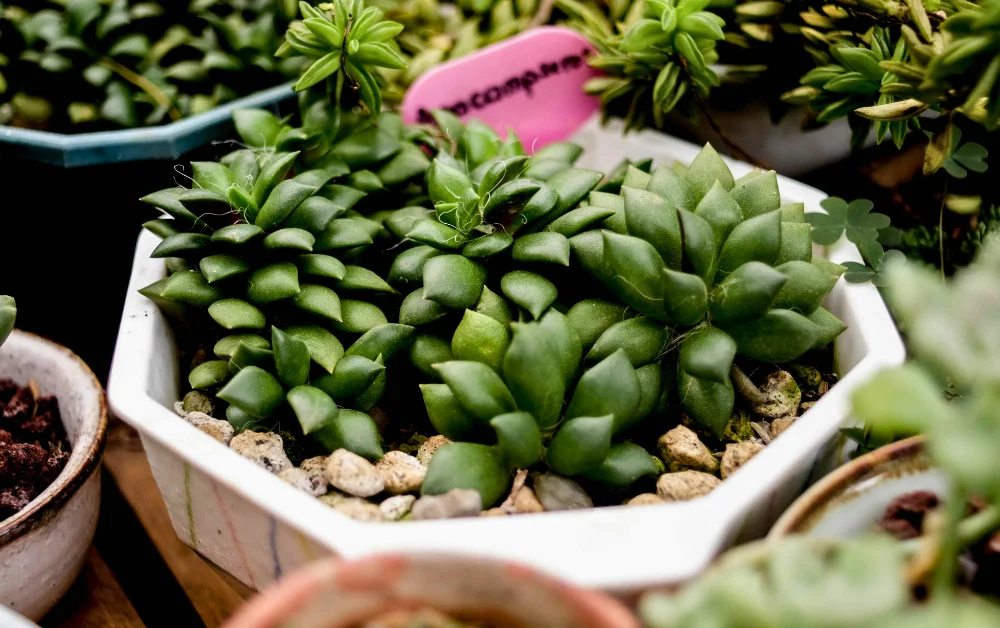
1. Find the Perfect Spot: Choose a well-ventilated location(s) in an area that will show off your exquisite succulents. The space should be able to accommodate your plants, the light(s) and, perhaps, have the potential for growth. It’s important to consider that some succulents can grow quite large.
2. Potting and Soil: Use pots with drainage holes to prevent waterlogging, a leading cause of succulent rot. Opt for a well-draining cactus mix or create your own by combining potting soil with perlite or pumice for added drainage.
3. Positioning the Grow Light: Ideally, the light should be 12-24 inches above the plant, depending on the light’s strength. Adjust the distance based on any heat emission, ensuring the leaves don’t feel hot to the touch.
4. Lighting Schedule: Mimic natural daylight by providing 12-14 hours of light per day and 10-12 hours of darkness. Timers can be helpful for maintaining this consistent schedule.
South facing windows aren’t quite cutting it.
Explore the vital role of Daily Light Integral (DLI) in plant growth, comparing South Facing Windows to high-quality Grow Lights.
Caring for Your Indoor Succulents:
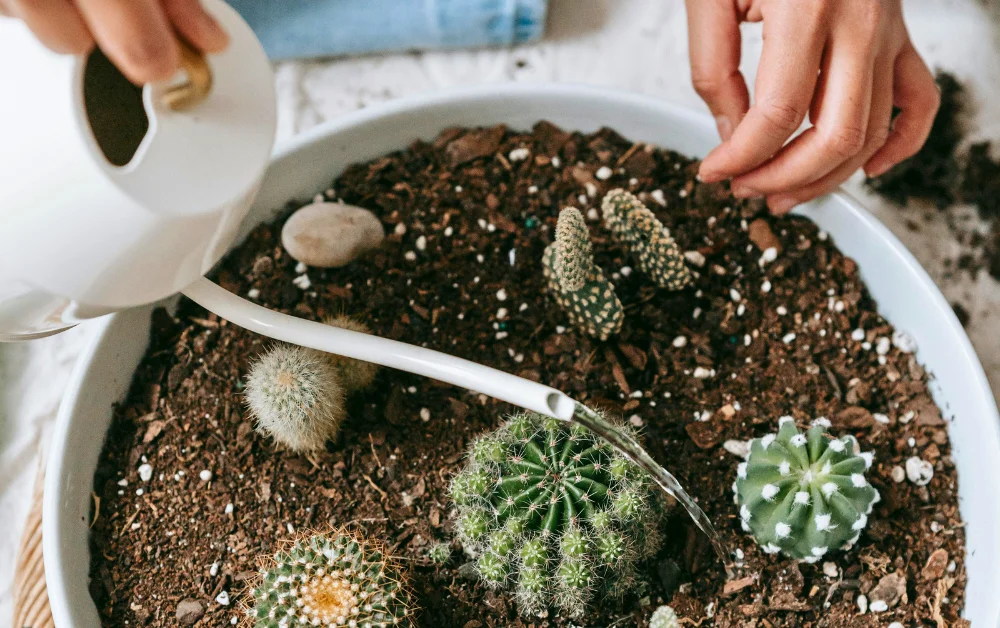
1. Watering: Succulents store water in their leaves, so resist the urge to overwater. Water deeply only when the soil is completely dry to the touch. During winter, even less watering is needed.
2. Rotation: Rotate your plants regularly to ensure even growth on all sides. This is especially important under artificial light, as plants naturally lean towards the light source.
3. Feeding: While not essential, a balanced succulent fertilizer applied once or twice during the growing season (spring and summer) can give your plants a boost.
Troubleshooting Common Issues with Succulents:
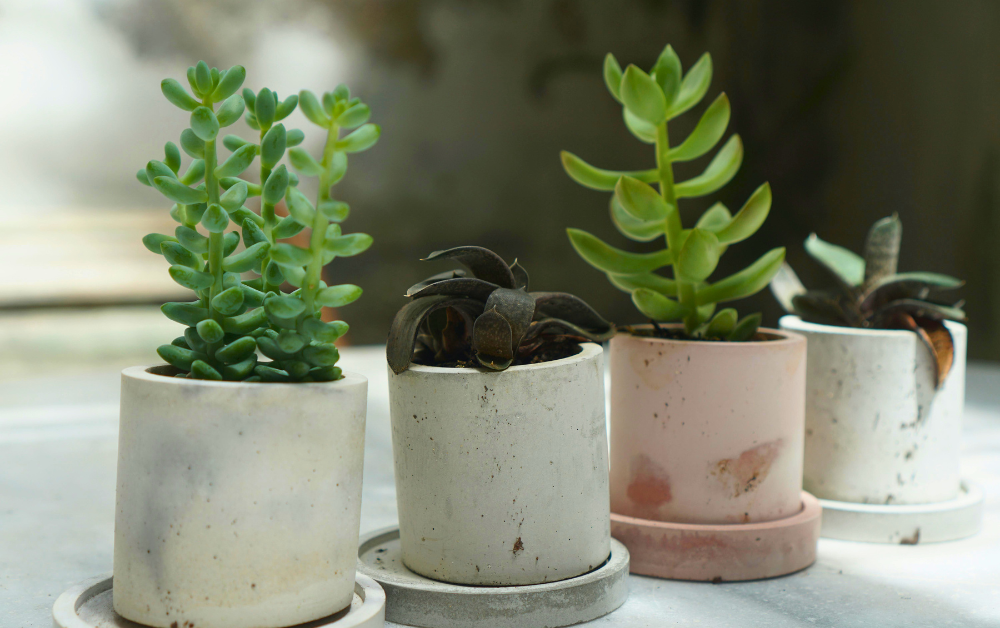
- Stretched or leggy growth: This indicates insufficient light. Move the grow light closer or increase the lighting duration.
- Pale or washed-out colors: The light might be too strong. Increase the distance between the light and the succulents.
- Sunburn: Brown or yellow spots on the leaves can be a sign of sunburn. Reduce the light intensity or duration.
Two Popular Methods to Propagate Succulents :
Succulents are not only easy to grow and care for, they are also easy to propagate allowing you to expand your garden to be as large as you desire with little to no cost. There are two main ways to propagate succulents grown indoors: by leaf cuttings and by stem cuttings. Both methods are fairly simple and require minimal supplies.
Here’s what you’ll need for either method:
- A healthy succulent plant
- Sharp shears or pruners
- Potting mix specifically designed for cacti and succulents (or a well-draining mix you create yourself)
- Small pots with drainage holes
To Propagate Succulents by Leaf Cutting:
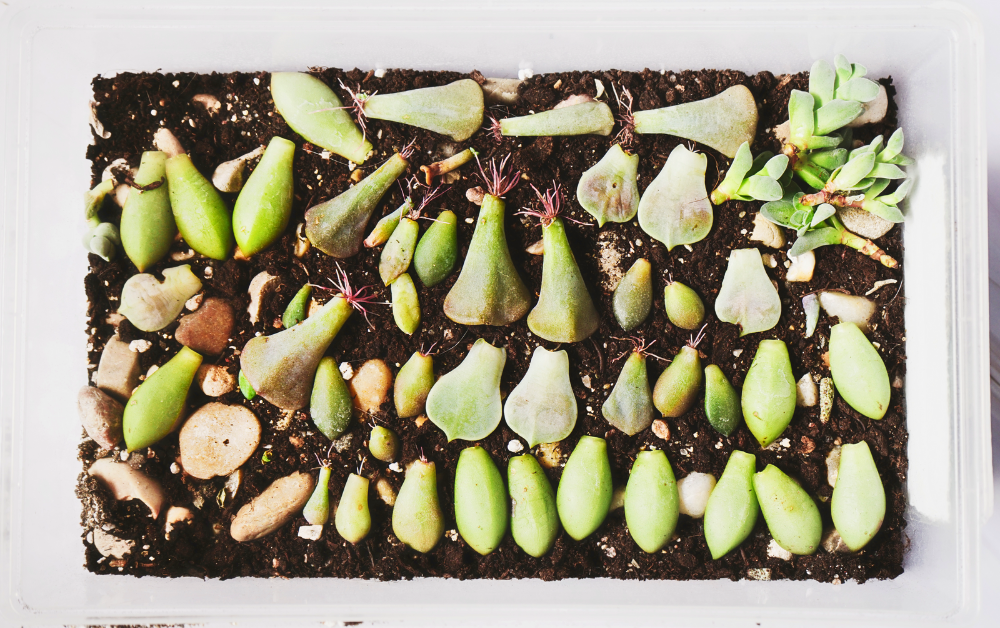
- Pick a healthy leaf: Choose a plump, undamaged leaf from your plant. Gently twist or pull the leaf from the stem, taking care not to tear it.
- Let the leaf callous over: Place the leaf on a well-ventilated tray or paper towel in a warm, dry location away from direct light. Leave it for a few days (3-7) until the cut end forms a callus, which is a dry, scab-like scar.
- Planting the leaf (optional): You can plant the leaf directly on top of the succulent mix, or you can gently lay it on the soil with the calloused end barely touching the surface.
- Watering and care: Don’t water the leaf at this stage. Provide bright, indirect sunlight or place under a Happy Leaf LED grow light for 16 hours/day and wait patiently. Over time, roots will sprout from the calloused end, and a tiny new succulent plantlet will emerge from the base of the leaf.
- Potting the new plantlet: Once the new plantlet has developed its own roots and a few small leaves, you can gently pot it up in its own container with a succulent mix.
To Propagate Succulents by Stem Cutting:
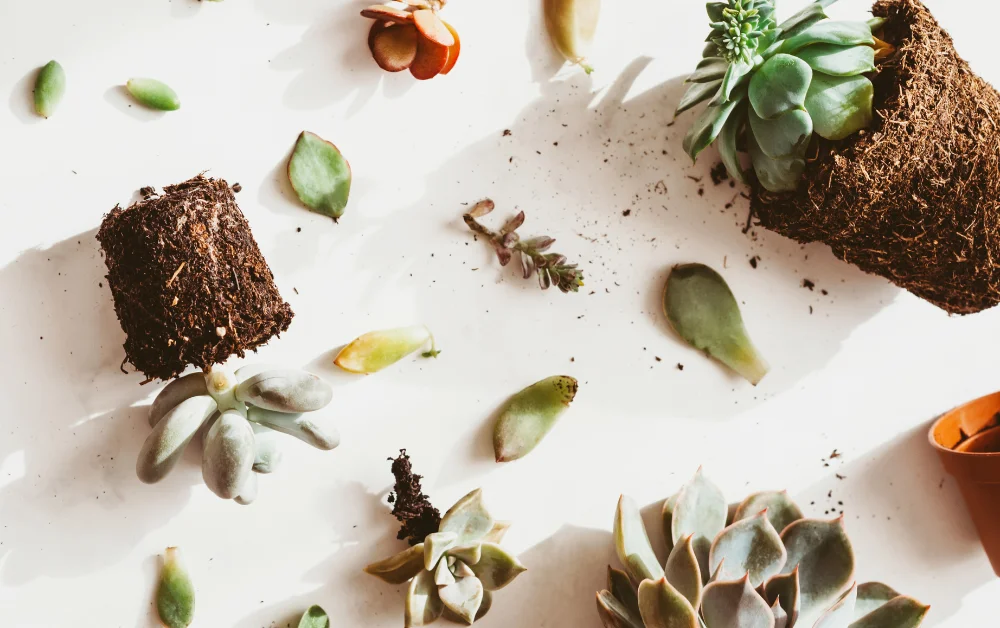
- Take a stem cutting: Using sharp shears or pruners, cut off a healthy stem from your succulent, ideally just below a node (the bump where leaves grow). If the stem is leggy, you can cut it into sections, ensuring each section has at least one node.
- Let the cutting callous over: Similar to leaf cuttings, place the stem cutting on a tray or paper towel in a warm, dry location away from direct light for a few days (3-7) to allow the cut end to callus over.
- Planting the stem cutting: Once calloused, plant the stem cutting in a pot filled with succulent mix, burying the end where the leaves were removed.
- Watering and care: Water the soil lightly to settle it around the cutting. Provide bright, indirect sunlight and avoid overwatering. The cutting will develop roots over time and begin to grow new leaves.
- Repotting: Once the new succulent plant is established with a good root system, you can repot it into a larger container if desired.
Tips for successful succulent propagation:
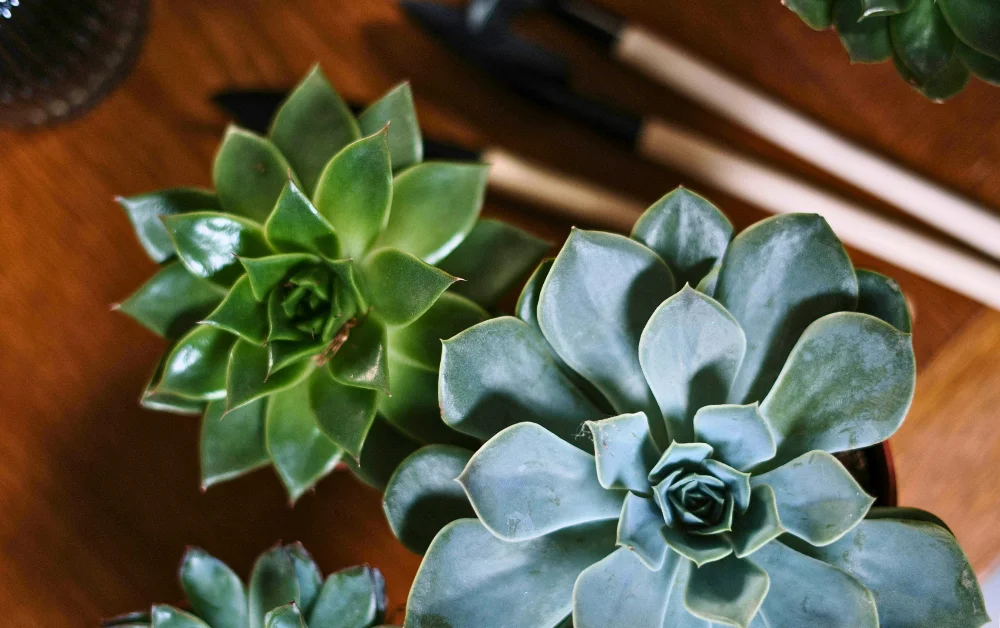
- The best time to propagate succulents is during the spring or summer when they are actively growing.
- Use sterilized tools to avoid introducing diseases to your plants.
- When watering your newly propagated plant, err on the side of underwatering. Succulents are more prone to rot from overwatering than underwatering.
- Be patient! Propagating succulents can take several weeks or even months to see successful results.
By following these steps and providing the right care, you can create a thriving indoor succulent garden using LED grow lights. Remember, succulents are relatively low-maintenance plants, so don’t be afraid to experiment and adjust your approach as needed. Soon, your home will be filled with the beauty and charm of these unique and resilient plants.
Want your succulents to grow bigger, faster and more colorful this year?
In this video, we tested how different kinds of grow lights and conditions affect the growth of your indoor succulents. You’ll see how our Happy Leaf LED Procyon PRO stacks up against our competitors as well as an indoor greenhouse setting. Join us as we dive into the details of what makes each light unique and how it affects your plants!
